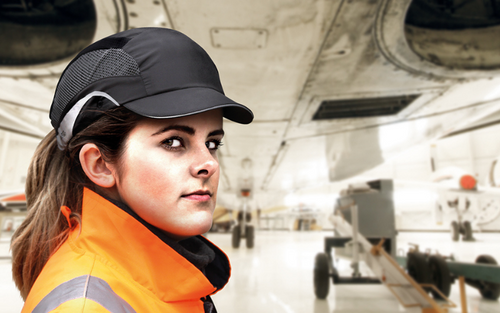Differences Between Bump Caps and Hard Hats
Thousands of workers sustain head injuries at work every year, and those injuries can result in time away from work and even death. However, a lot of those injuries happened in industries outside of construction or places where hard hats are required. One of the challenges that workplaces and employers face is not understanding the risks of the job and what kind of PPE is required. While hard hats are the obvious choice for some industries, bump caps are a type of head protection that’s gaining a lot of traction. As a worker or employer, you probably have a lot of questions about choosing the right head PPE. Here are some of the biggest differences between hard hats and bump caps.
Hard Hats
Hard hats are highly rugged and protective headwear that’s practically the face of the safety supply industry. They’re made of a hard high-density polyethylene (HDPE), plastic, nylon, or thermoplastic resin outer shell with an inner suspension system made of some combination of plastic or nylon. They’re best suited for worksites where workers’ heads are at risk from falling objects—think construction sites, utilities, and logging. They come in two types: Type I hard hats have to withstand vertical penetration and impact force, and Type II has to also include lateral resistance to penetration on the front, back, and sides of the helmet. The type that you get will depend on what kind of work you’re doing and what design choices you’ll benefit from.
Bump Caps
Not every situation that needs head protection requires a hard hat. While bump caps don’t meet ANSI or CSA requirements and will absolutely not replace a hard hat when one is needed, they still provide convenient head protection from discomfort and injury. If workers are at risk from worker-generated impacts into stationary objects—AKA, banging your head on something—bump caps could be a good fit.
It may also be helpful to think of bump caps as scalp guards. Even superficial cuts to the scalp produce shocking amounts of blood, and many will require stitches to close the wound. Avoiding this trauma can be as simple as wearing a protective cap. Providing awareness of the dangers is the first step towards worker acceptance.
Exterminators, contractors, baggage handlers, truck drivers, mechanics, and many other workers can benefit from using bump caps. Bump caps can look like traditional cotton and nylon baseball caps with a hard plastic shell and foam on the inside, but some styles look like simplified plastic hard hats, and there are also bump cap inserts designed to fit inside of a preexisting hat to make it a little more protective.
Bump caps often look like baseball caps, but can come in more shapes and sizes.
The Future of Head Protection
As long as there are employees on worksites with head trauma hazards, there will always be a need for hard hats and bump caps. The PPE of the future will be more effective, comfortable, and easy to use than the gear of today as more solutions are created. Health and safety professionals, manufacturers, dealers, and researchers are all invested in old and new head protection technology, especially as more research about the effects of head injuries comes out. Future helmets might look like climber-style hats as head protection manufacturers take notes from fall protection gear, but only time will tell.
PK Safety: Your Workplace Safety Partners
Whenever you need safety equipment or advice, PK Safety can help. We’ve been in the business of keeping workers safe for over 70 years and plan to be here for many more. While not every injury can be prevented, we’re here to arm you with the knowledge and equipment you can use to decrease your risk. For more information on our products or to get some recommendations or advice, contact one of our safety experts online or call 800.829.9580.
Recent Posts
-
Customizing Gas Detectors: Tailoring Solutions to Fit Your Unique Requirements
In today’s diverse industrial landscape, a one-size-fits-all approach to safety simply doesn’t cu …Jul 3rd 2024 -
10 Ways to Prevent Wildfires
You can prevent wildfires by extinguishing flames before you leave the worksite. Avoid practicing …Jul 1st 2024 -
ANSI/ISEA 138 Safety Gloves: Ensuring Hand Protection
The human hand is an anatomical masterpiece and arguably the greatest tool attached to our bodies …Jun 25th 2024





